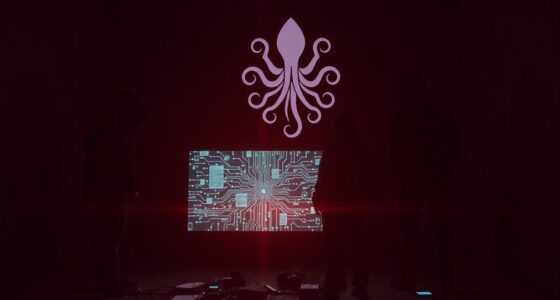
As cyber threats evolve, Jacirt has identified a range of new dangers that organizations must confront. One significant concern is the rise of state-sponsored attacks, particularly those linked to Chinese hackers. These threats often target critical infrastructure, aiming to disrupt services, steal intellectual property, or gather sensitive information. The sophistication of these attacks has increased, making it essential for organizations to adopt a proactive cybersecurity stance.
Ransomware is another evolving threat. Today's ransomware attacks are more complex, often combining data theft with operational disruption. This means you can't just focus on recovering your data; you need to consider the overall impact on your operations and reputation. The emergence of Ransomware-as-a-Service (RaaS) has made these attacks even more accessible, allowing even unskilled hackers to launch devastating attacks against organizations like yours. In 2024, data breaches reached 3,158, highlighting the growing urgency for organizations to bolster their defenses.
Artificial intelligence plays a dual role in this landscape. While AI can enhance your cybersecurity measures, malicious actors are also using it to improve their own attacks, making social engineering tactics, including deepfakes, more effective. You're now facing adversaries who can craft convincing impersonations, tricking employees into divulging sensitive information.
Supply chain risks are another area you need to watch closely. Many organizations lack visibility into the security practices of their suppliers, leaving them vulnerable to attacks that exploit these weak links. With geopolitical tensions rising, the risk of espionage and intellectual property theft is more pressing than ever. If your organization relies on a vulnerable supply chain, you might be an easy target.
Regulatory challenges add another layer of complexity. Fragmented cybersecurity regulations mean that compliance can be a daunting task. Staying on top of these requirements is crucial, as non-compliance can lead to heavy fines and reputational damage.
As you navigate this evolving landscape, adopting a Zero Trust architecture might be your best bet. Traditional perimeter security is becoming less effective against sophisticated threats. Integrating IT and operational technology (OT) security is also critical, especially as vulnerabilities emerge in these areas.
Lastly, raising awareness about these threats is essential. You need to ensure your team understands the risks and is equipped to respond effectively. As Jacirt highlights, building resilience and adapting to these new threats is the only way to safeguard your organization in this ever-changing cybersecurity environment.








